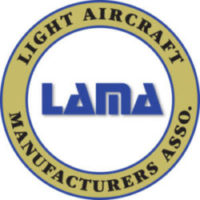

Understandably, manufacturer interest is keen; it’s their business. At the same time, individual pilots increasingly raise similar questions.
Top-Four Questions
I’ll address some common inquiries before getting into specifics of the LAMA meeting. The following reflects questions I’ve often heard, along with my responses. As you read these, remember, I am merely one reporter describing discussions I’ve heard. Disclaimer: Information in this article is not official and may not reflect what FAA is planning.
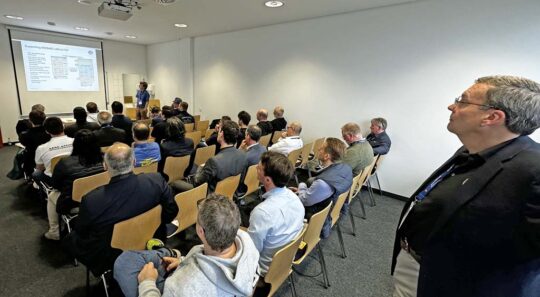
Van’s Aircraft President Rian Johnson presents to a manufacturers meeting organized by LAMA.
My information comes from being part of ASTM and the effort to write LSA standards plus new ones for coming Mosaic aircraft, which I have dubbed “mLSA” to abbreviate the mouthful. These discussions are open to all ASTM members; I am not revealing confidential information. Want to hear this news even earlier? Join ASTM and be part of the solution.
Will I be able to fly a legacy (Cessna-Piper-Ercoupe-etc.) aircraft with my Sport Pilot certificate? — One of the most common questions I hear is one of the most difficult because any answer is largely guesswork. ASTM members hear a lot about plans for Mosaic aircraft.
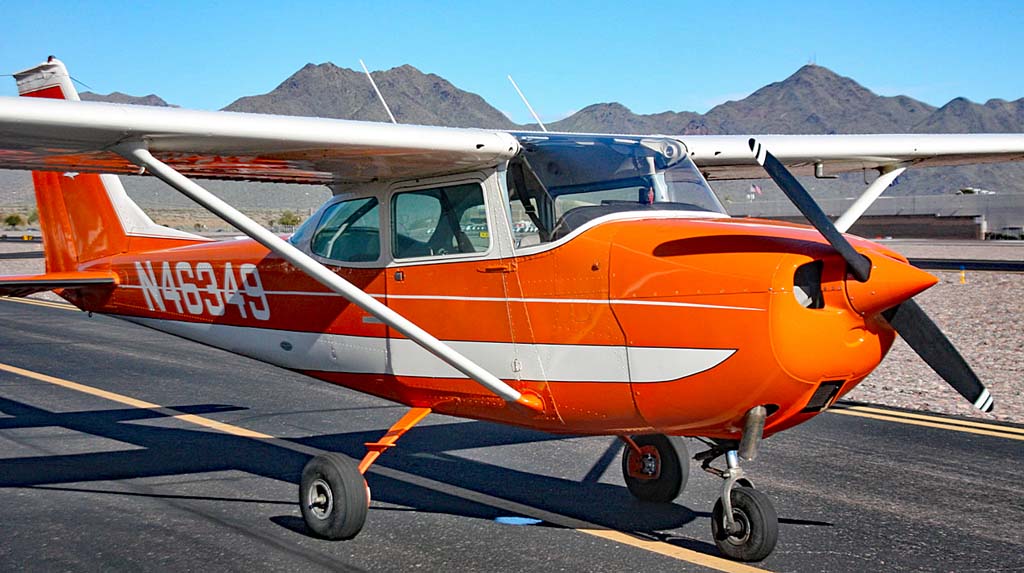
A typical legacy Cessna 172 that will likely be included under Mosaic. This one has been operated by Scottsdale (AZ) Flight Training.
However, we hear almost nothing from the Flight Standards group that dictates pilot certification requirements and operational limitations. LAMA has asked many times; we simply don’t get many answers. It is these people who will judge if and how you can fly a Cessna 172 (for example) as a “Mosaic aircraft” and what pilot certificate will be required to do so. I doubt we’ll hear more until the NPRM comes out but FAA people who have seen the proposal have repeated a statement, “You’re gonna like what’s in this rule.” At last year’s AirVenture, a top FAA official promised the NPRM “in August 2023.”
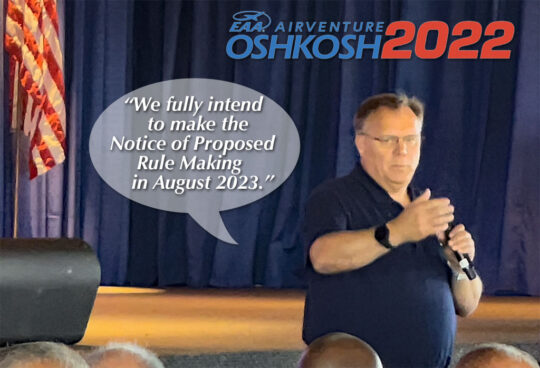
FAA executive David Bolter predicts a date for the NRPM.
Until then, what we know is… Mosaic is based significantly on ASTM standards and the almost-20-year record of LSA operations. FAA is not only going to continue this method for LSA and mLSA; they are greatly expanding it into Part 23-type aircraft, that is, present-day Cirruses, Cessnas, and Diamonds.
Therefore, FAA may follow the SP/LSA experience and allow the use of endorsements for Sport Pilot privilege upgrades. To move to a four-seat retractable, obtain additional instruction, get a logbook endorsement, and start flying the new aircraft. We can hope it will be so straightforward. (Insurance companies will have as much to say about this as the FAA.)
related… Are Four seaters included? — The answer is similar. Yes, four seaters are expected — see a series of them in this article. As with legacy aircraft, we do not yet know what the pilot requirements will be. I would not expect a Sport Pilot holder or user to be allowed four-seat operations, but perhaps with endorsements…?
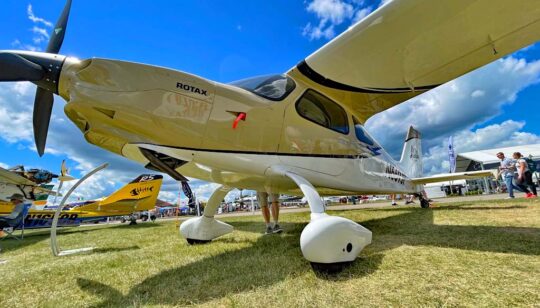
The Aircraft Factory‘s new Sling HW in taildragger configuration. The new model seats four.
How much can a mLSA weigh? — We’re fairly sure that mLSA will not have a specified weight, as it is today at 1,320/1,430 pounds. More likely wing loading will keep an aircraft within FAA’s mLSA mantra: “Easy to fly, operate, and maintain.” It is important to remember that when regulation allows higher weight or other increased capabilities, the cost of aircraft will rise.
Fortunately, today’s 1,320-pound LSA are in no jeopardy. If your current LSA works for you, it should be fine under Mosaic. Many existing LSA have paid off their development costs and should not see large price increases, although shipping remains stubbornly high.
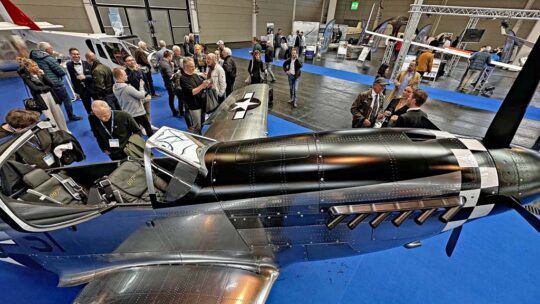
SW-51 (article) may become a mLSA under Mosaic. Note that all those rivets and screws you see aren’t real. Thousands were painstakingly added to the composite molds..
How fast can a mLSA fly? — Again… this is more about the pilot’s qualifications than an aircraft’s ability to fly faster. With retractable gear, in-flight adjustable propellers — yes, both may be allowed — and sophisticated configurations like Fowler flaps, LSA have proven they can go fast and slow. That means a bigger and/or faster airplane may still be “easy to fly, operate, and maintain.”
ASTM & FAA Cooperate
In his remarks, Rian made a pivotal statement, “FAA will not release Mosaic completely until ASTM standards are in place and FAA has [officially] accepted them.” His statement may tell you two things:
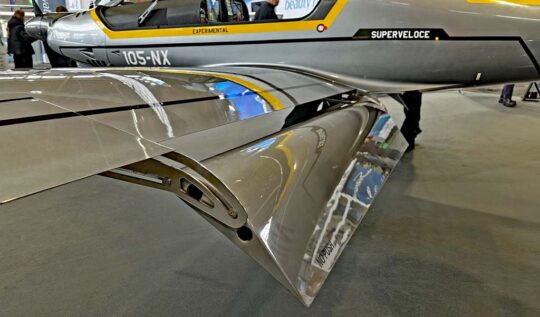
Fowler flaps extend deeply on Porto Aviation’s Superveloce (article); they retract so that they are almost entirely hidden.
First, ASTM standards are an essential element of Mosaic. FAA’s new regulation cannot go forward without ASTM standards written by the F37 committee. This is not the FAA way prior to LSA when industry consensus standards came into being. ASTM must have standards to which airplanes can conform before Mosaic can be realized.
Rian mentioned ASTM work on two important standards needed for Mosaic. One addresses flutter. While important to aircraft operating at any airspeed, control surface flutter tends not to be a significant problem until speeds get faster. FAA’s request for a flutter standard is evidence of higher speeds being allowed. As with weight, we do not expect maximum speed to be a specific number — as 120 knots has been for current LSA. Both weight and speed will rely on other criteria, perhaps most notably a wing loading limit. You can build a bigger airplane but it will need a bigger wing or a great flap system if it is to stay within FAA’s “easy to fly, operate, and maintain” mantra.
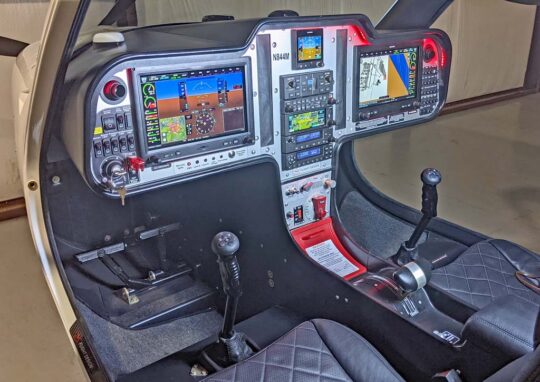
Flight Design‘s well-regarded F2 has an IFR-ready panel. The vertical black strips left and right of center are airbag installations.
The second standard Rian described is one for IFR flight into IMC (i.e., instrument flight into actual conditions). Contrary to what many think, FAA does not prohibit LSA from IFR operations. Instead, ASTM standards restrict this activity because manufacturers presently have no IFR standard to which they can declare compliance. This is why some brands help buyers change their registration to ELSA, which when properly equipped (it’s easy to do so today with EFISs), can be flown under IFR rules assuming the pilot is also qualified.
Rian’s main message about these two standards-in-process is that ASTM’s F37 LSA committee needs all the good help it can get. I have often promoted that the technically-oriented among you can participate. ASTM membership is only $75 per year and for that you get one official vote… the same as all of FAA with its 40-50,000 employees. You: 1. FAA: 1. It feels empowering, doesn’t it?
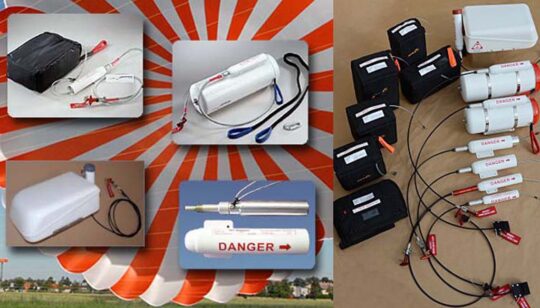
Magnum Parachutes in the USA is quartered in DeLand, Florida. The brand has systems for many LSA and kit aircraft.
If you think you aren’t technical enough, please know you don’t have to be the world’s leading engineer. Indeed, I wrote one of these standards (F2316 for emergency airframe parachutes). I am not an engineer. I consulted with knowledgeable engineers and followed writing patterns of other standards to accomplish this and successfully balloted it to F37 members in just six months, a record for ASTM. I’m pleased to brag a little on the speed of the work but my primary point is that you can offer a direct contribution to standards that will let Mosaic get airborne.
More Fresh Mosaic News
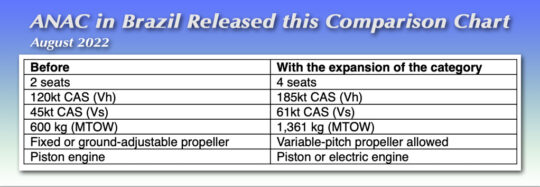
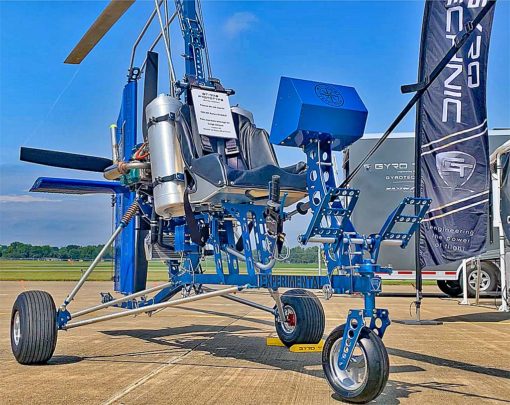
Like all gyroplanes to date (in America), Gyro Technic’s entry (article) must be built from a kit; that will change when Mosaic allows SLSA gyros.
By now, most are aware that gyroplanes will finally become full-fledged LSA that can be delivered ready to fly. This took far too long but the logjam has been broken.
One surprise is that helicopters may be included. While LAMA lobbied long and hard on behalf of gyroplane SLSA, we didn’t ask about helicopters; that seemed a bridge too far.
Neither did LAMA ask for hybrid electric when we prepared white papers for all proposals including electric propulsion. Yet, FAA broadened our request for battery electric into hybrid electric as well.
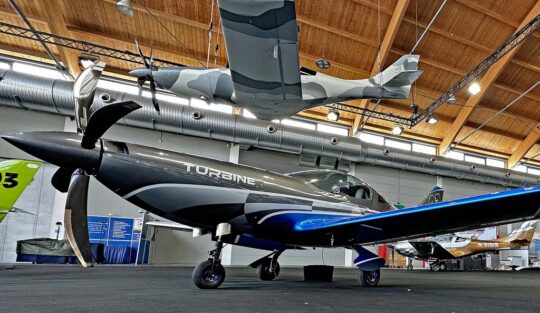
ARTICLE LINKS:
- LAMA, the Light Aircraft Manufacturers Association website
- LAMA, membership benefits PDF —or— membership PDF form
- ASTM F37 Committee for LSA, join ASTM, learn more faster, and be part of the solution
- Brazil’s ANAC, a very similar regulation to Mosaic, in an article on this website


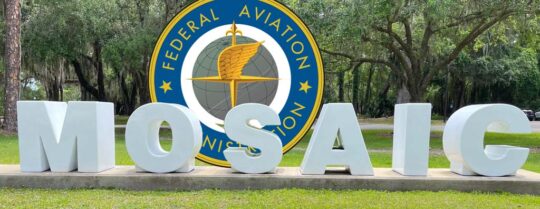
Legacy aircraft do not need to change anything. The current law is sufficiently complex; usually requiring in depth analysis to know how it applies. Including Legacy Aircraft in any changes is just wrong.
Although, if the plan is to simply allow sport pilots to fly type certificated 2 and 4 place aircraft; I can not imagine anyone objecting. With flight training being what it is, I can not imagine a safety problem allowing sport pilots to be checked out in and fly 2 and 4 place type certificated aircraft.
The only continued problem is that airplane costs are very very high. ANAC jumping to just under 3,000 lbs is pretty awesome if that comes to us too. But getting into an mLSA plane without being at the cost of a used certified 182 seems difficult. LSA still appeals with Modern avionics, newer engine tech, and an airframe 5 years old instead of 40 is pretty powerful tho. Guess we will see how this shakes down.
Opener CEO, Ken Karklin has told a British reporter, the price of a Blackfly should be just under a Robinson R22 helicopter, or under $350,000; which is too rich for me also. But the assembly line Blackflys, in 10 years could come down to around $100,000. Which in ten years, I hope I can find. So no hurry, by all indications; except not getting any younger plays into this. I have urged Opener to go to their 2nd generation Blackfly with 12 KWH batteries and 50 minutes and 50 mile endurance; without response. The Opener first generation Blackfly with 8 KWH batteries has a 25 minute or 25 mile endurance; or just too short for me. And with VFR reserve limits at 30 minutes of flight in part 91, I believe, I do not know how Opener expects to license their first generation 8 KWH Blackfly. I can only assume the FAA will insist on their 12 KWH endurance Blackfly; to keep it VFR legal. Though, VFR flight is not listed in part 103. Except part 91 I believe still governs for flight. Does a special rule for ultra lights exist that exempts them from the 30 minute VFR reserve rule in part 91? I have not found any exception in part 103. My assumption is all gas powered ultra lights have a one to two hour endurance or longer.
Dan, thanks so much for the latest info possible. I know people want changes to the ultralight rule but if the FAA gets into modifications it will more than likely get more restrictive. So overall the best for all is to leave 103 alone.
I’m happy for those people with the money to spend. What I have read here should allow more people to become pilots, but many, such as me, don’t have the thousands of extra dollars for that. We fly ultralight aircraft that are usually well used to fit our budgets. Maintaining them is not expensive and usually are broken down to trailer home reducing storage issues. We do ask for two things the FAA is adamant on rejecting. That is to carry a bit more gas and increase the weight limit. But time and time again no one wants to piss off the FAA on Part 103. Please tell us WHY we can’t carry more useable fuel and have heavier ultralights? They can be built stronger for today’s heavier pilots and additional fuel would allow many of us to reach airstrips for gatherings which one hour of fuel doesn’t allow.
The simple answer to your question is that a manufacturer would not be abiding by the regulation if they added more gas or designed to a higher weight. In order for such an “expanded” Part 103 vehicle to meet existing regulations, Part 103 would have to change. FAA has continually stressed that any change would make Part 103 much longer and undoubtedly more restrictive than today. Is it worth the change for some extra weight and fuel? Most have decided, no.
Except, Opener will not sell an experimental aircraft. Meaning Opener needs a special ultralight type certificate and production certificate. So this change as a minimum is needed in part 103. And also, flying in populated areas is currently prohibited; which does not work for the Opener Blackfly with a biplane wing span of 13 feet 7 inches; or is street legal. The Blackfly should be able to park; takeoff, and land on any street, highway, or driveway where parking is allowed and no wires or trees within 10 feet. Opener has not said any of the above to the public; but perhaps to the FAA. And since UAVs now can be flown nearly anywhere that does not conflict with airline or small airport traffic; the above appears to be a certainty; if the FAA is paying attention; generally the FAA does pay attention. And lastly, the latest ASTMs used for aircraft, Opener has used, which should make the certification process simpler and especially for an ultralight aircraft where all of the regulations should remain simple. One other consideration: the commerce clause of the US Constitution says no one can impede commerce with over 200 years of case law to back it up. Meaning all of the above needs to happen because not incorporating any of the above would be impeding commerce.
Do you happen to know of anyone that flies with an implanted defibrillator? I have lost my medical and I am looking in to if I willbe able to fly with a implanted defibrillator. If you have any information on this topic please let me know.
Alex filosa
I don’t have that answer. Yet I do know you can fly Part 103 or a motoglider without any medical. Those types may not work for you, but they are available today.
The pipestrel sinus is an excellent motor glider and will allow you to fly to 18,000 ft, at night, no speed restrictions, and out of the country to any country, Canada, Mexico and carribean islands
As an Opener Blackfly follower; knowing what the FAA is codifying for part 103 is important to personal aviation much more so than existing aircraft. Specifically, the Blackfly has a wing span of 13 feet 7 inches, making the Blackfly street legal for landing and takeoffs from driveways, roads, and highways that do not have wires or trees within 10 feet of the landing or takeoff locations. And as an ultralight, the operators are not pilots and do not need a pilot license; only a drivers license. Removing airports as an intermediate hub for travel is critical to spreading traffic out to wherever people want to go. And keeping airports less busy. So, part 103, not being able to operate in populated areas needs to go away; similar to UAVs. As a pilot for over 50 years with commercial pilots license and instrument rating; I can say not having to use or go to an airport is nearly everything. Or more specifically, an ultralight that can land and takeoff from my driveway and generally go where an auto goes is the overwhelming first choice for getting around. Or the Blackfly can move the same as an auto except in the 3rd dimension; which is just wonderful. No one expects the Blackfly to use roads except for landing and taking off; or for parking only. With the 3rd dimension, no reason exists to follow roads; except possibly for climb out or descent and away from wires or trees. So MOSIAC has taken on real significance for ultralights. Also, Opener will not sell experimental aircraft. Meaning a special ultralight type certificate and production certificate for ultralights is also needed. And has generally not be talked about; regrettably. The appearance is Opener is waiting on the FAA for an ultralight type certificate and production certificate before sales start.